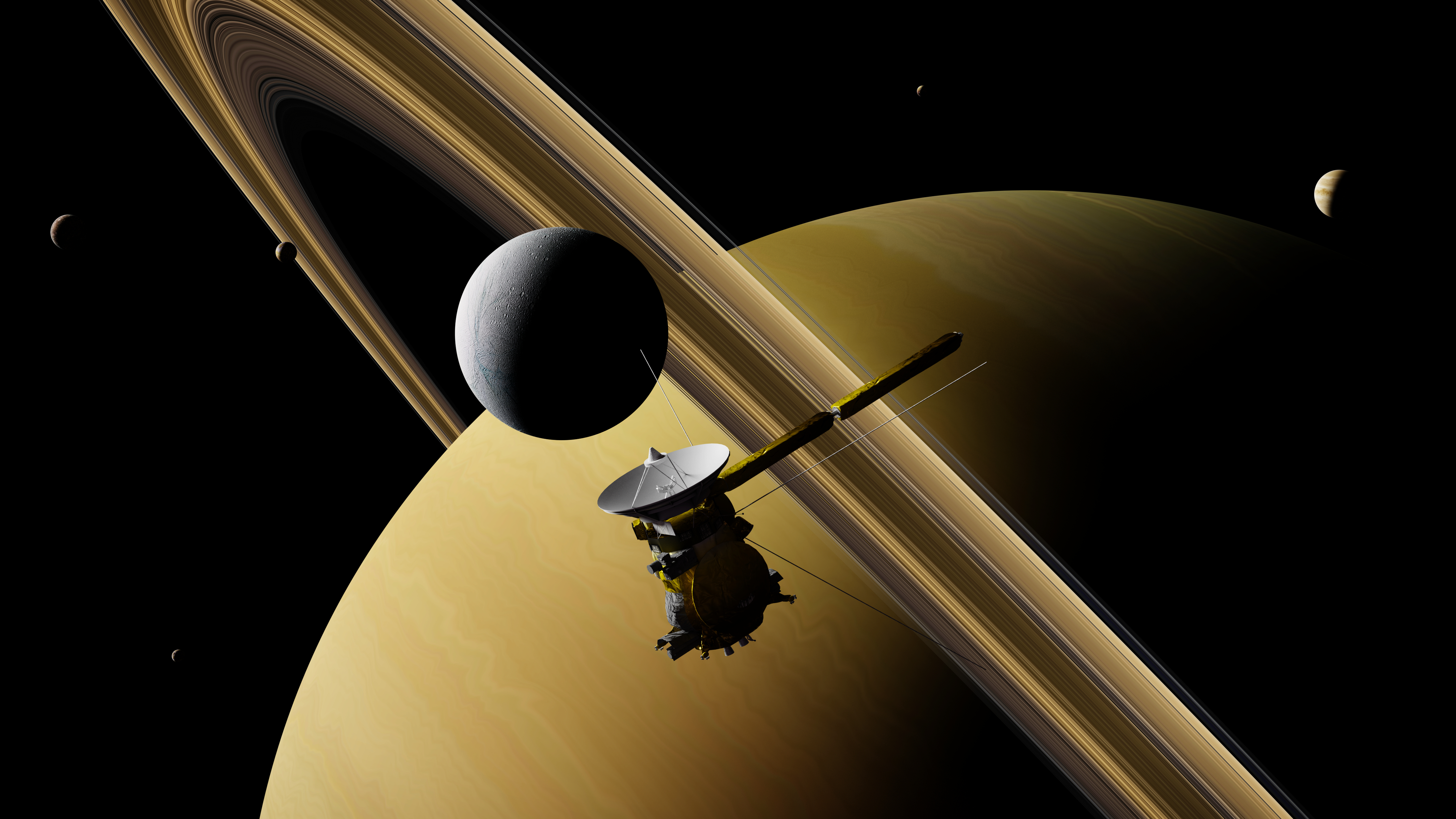A spacecraft that scientists from the University of Oxford played a key role in building, has come closer to the planet of Saturn than ever before.
On Wednesday 26 April 2017, Cassini became the first spacecraft to ever plunge between Saturn and its innermost rings. In doing so, it came closer to the planet than any probe before it. This historic manoeuvre marks the beginning of the end, for what has been a landmark space mission.
Led by NASA’s Goddard Space Flight Center, the probe was first launched over twenty years ago. Since leaving Earth it has informed a new age of science, enabling unparalleled understanding of Saturn’s activity. Over the next five months the satellite will make a series of bold orbits around the planet (twenty-two in total), delivering valuable, high quality data. Before finally, burning into oblivion, as it runs out of fuel and crashes into Saturn’s atmosphere. The culmination of decades of work, the end of Cassini will be bittersweet for all involved, including the team of scientists at Oxford University and RAL Space in Didcot, who built some of the instrument’s most significant components.
The original Cassini mission launched in 1997 and the Department of Physics at Oxford University has been involved with the satellite’s creation from the start, with the team even attending the launch at Cape Canaveral. The joint US and European Cassini-Huygens mission is the most complex and ambitious unmanned space expedition in history. Cassini was the first spacecraft to orbit Saturn, and has informed scientists' understanding of its structure and atmospheric make-up, including the realisation that the planet has sixty two moons, twenty more than first thought.
Cassini/CIRS has been the bedrock of our scientific exploration of the solar system for the last 20 years and has come closer to Saturn than any probe before it. For some of us, who got married around the same time of the launch in 1997, the mission has particular personal resonance and we will thus be very, very sad to see it finally finish.
From a collective statement given by the Oxford University team involved in the Cassini mission to Saturn.
Scientists from Oxford provided significant components to one of the mission’s main instruments; the “Composite Infrared Spectrometer” or “CIRS”. The CIRS measures the heat emitted by a planet’s atmosphere or surface, and reveals the individual elements present in samples of minerals and gasses, revealing their chemical make-up.
The Cassini instrument was led overall by NASA’s Goddard Space Flight Center, but here in Oxford, the team provided two critical structural elements; Firsty, the radiative cooler, which is the radiator that sits on the side of the spacecraft, cooling the CIRS infra-red detectors to -190C; and the mid-infrared focal plane assembly, which holds the infrared detectors and focuses the light from the instrument’s main telescope, a bit like the retina of the lens of an eye.
As the mission draws to a close (due to complete and self-destruct in September 2017), the technology has allowed the team to use CIRS data to analyse and observe the atmospheres of Saturn and its giant moon Titan. CIRS has been involved in some major discoveries, such as mapping the temperature variations on Saturn’s moons, and identifying the heat pouring out of Enceladus’ south polar region. It has also informed an understanding of the atmospheric variation and dynamic processes at play in Saturn’s atmosphere. (e.g. the north polar ‘hexagon’ in Saturn’s thermal structure, seasonal variations and mapping the development and chemistry of a giant stratospheric ‘beacon’ seen in 2010). It has also made great advances in understanding the complex organic chemistry and seasonal variations in the atmosphere of its giant moon Titan.
Led by Dr Simon Calcutt of Oxford’s Department of Atmospheric Physics, the team included; Dr Patrick Irwin, Professor of Planetary Physics (who went on to lead the scientific analysis effort), Dr Neil Bowles, University Lecturer, and Dr Jane Hurley, previously a Post-Doctoral Research Associate at Oxford, and now Project Manager at Science and Technology Facilities Council RAL Space.
Speaking on the mission’s imminent conclusion, the Oxford University Cassini team said: “Cassini/CIRS has been the bedrock of our scientific exploration of the solar system for the last 20 years and has come closer to Saturn than any probe before it. For some of us, who got married around the same time of the launch in 1997, the mission has particular personal resonance and we will thus be very, very sad to see it finally finish.
“The instrument has been an amazing success and worked pretty much flawlessly since arriving at Saturn in 2004. The Oxford and RAL teams have a long history of supporting the operations of the instrument and spacecraft, including designing many of the observations of Saturn, Titan, and icy moons. The project has however not come without its challenges: the instrument is programmed using software here at Oxford, and commands are then sent on to Nasa, who up-link them to the spacecraft. This has sometimes been technically challenging, particularly keeping the glint from the planet’s rings or a moon out of the instrument’s line of sight. Ring-dodging was an occupational hazard that none of us imagined when starting to work on this! None the less we are all tremendously proud of the mission’s accomplishment, and to have played a part in such a monumental piece of planetary research.”
